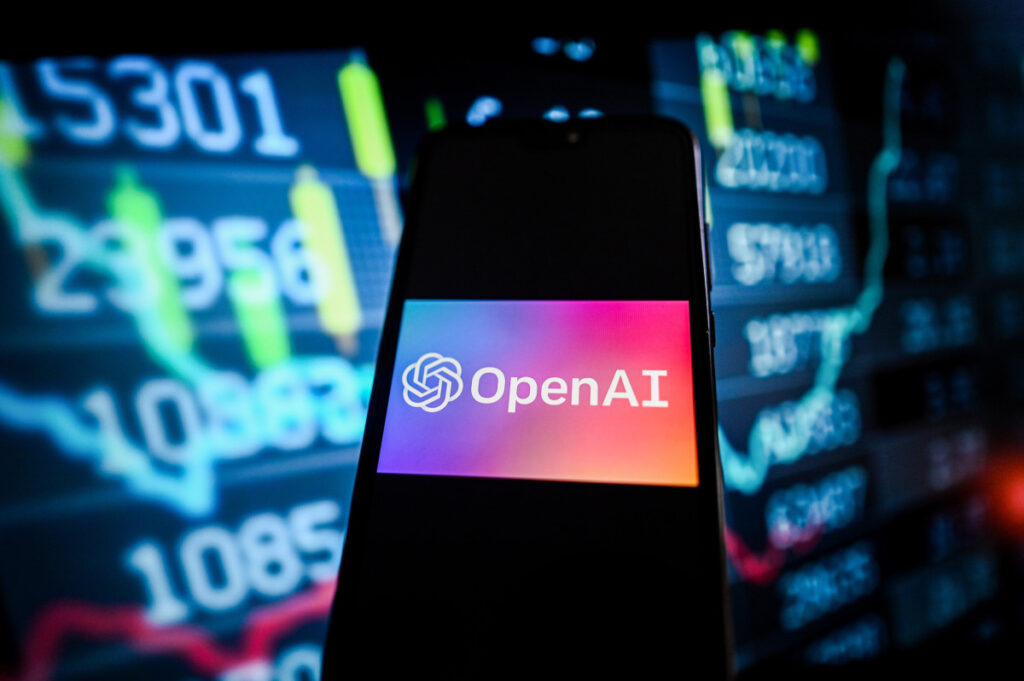One of the great questions about artificial intelligence is if or when the people running these organizations can show profits from their efforts and products.
It’s an important challenge for the AI world. Billions are being spent on AI development and products around the world. The technology is touted as the most important development in technology since the Internet emerged in the 1990s.
The short answer may be: Not many, at least not yet.
Related: Veteran fund manager highlights lurking stock market risk
Take Open AI, the San Francisco-based startup behind ChatGPT. The organization is slowly transforming itself from a non-profit into a for-profit venture.
Profits, however, are not yet a thing.
According to The New York Times, Open AI generated $300 million in monthly revenue in August , not a small number, and up 1,700% since the beginning of 2023.
Financial documents that The Times looked at suggested revenue could hit $3.7 billion in 2024 and may reach $11.6 billion in 2025.
And here’s the but: Open AI expects to lose about $5 billion this year alone. Many stand-alone companies are still in the mode of proving an addressable and profitable market for their offerings
To help convert itself into a for-profit venture, Open AI is now trying to raise some $6.5 billion to $7 billion in new capital, a process that might value the company at some $150 billion — “among the highest ever for a private tech company,” the Times noted.
Open AI CEO Sam Altman, who co-founded the company, could end up with a huge equity position and become a billionaire.
The fund-raising is being led by Thrive Capital, a venture capital company founded by Joshua Kushner, whose brother Jared is Donald Trump’s son-in-law.
Ultimately, the company wants to be a “public-venture corporation.” The structure allows a company to explicitly state its intention to make a positive impact on society.
Most corporations don’t make that a goal and mostly concentrate on enhancing shareholder wealth.
More on investing
- Jobs and Fed officials may rock stocks this week
- Veteran analyst who predicted Rocket Lab stock surge updates outlook
- Who was Benjamin Graham & why is he still so influential?
It’s not clear when or if a public offering of Open AI securities might occur. And the odds are that won’t happen until the financials are more clear.
In the meantime, lots of big names are putting money into Open AI’s fund raise, including Microsoft (MSFT) , Nvidia (NVDA) , Tiger Global and others. Apple (AAPL) had agreed to invest in the offering but has dropped out, The Wall Street Journal reported Friday.
Microsoft has reportedly committed $1 billion to the offering, on top of $13 billion already invested in Open AI.
A revolution in tech
Nvidia CEO Jensen Huang likes to say AI and the development of the chips and systems to power AI is part of a new industrial revolution.
In June, Cohere, a Toronto-based AI startup raised $500 million from the likes of Cisco Systems (CSCO) , Advanced Micro Devices (AMD) and Japanese electronics giant Fujitsu.
That translated into a valuation of about $5.5 billion. At the time, the company was generating only $35 million in annualized revenue.
Wall Street is more cautious on AI
AI may be revolutionary, as Jensen Huang says, but revolutions in business often produce large numbers of business restructurings and outright failures before a profitable model emerges.
And even internal volatility.
Open AI has seen a number of its top executives resign just this year.
Chief technology officer Mira Murati announced this past week she was leaving after six-and-a-half years. OpenAI chief research officer Bob McGrew and vice president of research Barret Zoph also announced their resignations from the company.
The departures come four months after OpenAI co-founder and former chief scientist, Ilya Sutskever, also resigned.
So, it should not surprise that investors seem to be at least a bit more skeptical, maybe just realistic, about Open AI and, for that matter, AI generally.
The AI story generated an ungodly amount of hype in 2023 and in 2024 until late June and early July.
Nvidia was up as much as 184.2% this year when it peaked at $140.76 on June 20. The shares are down 13.8% since. For the year, the gain is still a whopping 145%, but the shares are up just 1.3% with just one day of trading left in September and 2% in August, after a 5.3% decline in July.
Microsoft was up 56.8% in 2023 as the AI frenzy gathered strength and was up 24.8% when it peaked at $468.35 on July 5. The shares are off 8.6% since.
AI is new. You can buy shares of AI companies when they go public. You can buy into an ETF that focuses on AI, such as Cathie Wood’s Ark Innovation ARK Innovation ETF (ARKK) . But go in knowing these are very volatile vehicles, and there’s a good chance losses may occur.
Companies with longer track records and great balance sheets might be a conservative way to go.
Related: The 10 best investing books, according to our stock market pros
